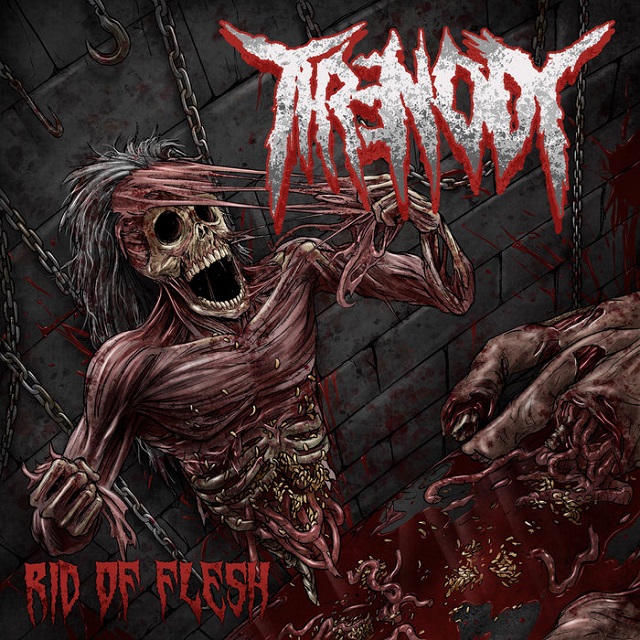O Metallica ainda fazia parte da cena underground do Thrash no início dos anos 80, quando seu álbum de estréia, “Kill ‘Em All”, foi lançado, mas eles realmente começaram a se estabelecer quando “Ride the Lightning” foi lançado em 1984.
Considerado como um grande avanço para a banda em termos de composição musical e maturidade lírica, “Ride the Lightning” apresentava estruturas muito mais complexas e temas socialmente conscientes do que seu antecessor. A formação foi finalmente solidificada, seguindo uma porta giratória de músicos, e eles lançaram sua primeira balada, “Fade to Black”. O Metallica, mal sabiam eles, estava a caminho do estrelato.
James Hetfield, Kirk Hammett, Cliff Burton e Lars Ulrich compartilharam sua segunda criação com o mundo em 27 de julho de 1984. Todos esses anos depois, o Metallica ainda está no topo do mundo. Aqui estão 10 fatos que você pode não saber sobre “Ride the Lightning”.
1. Foi lançado duas vezes
“Ride the Lightning” foi lançado inicialmente pela gravadora independente Megaforce Records nos EUA e Music for Nations na Europa. Ele vendeu 85.000 cópias em ambos os mercados, e então o Metallica assinou com a Elektra Records, que reeditou o álbum. Acabou chegando ao número 100 na Billboard 200 sem qualquer exposição no rádio, e acabou sendo certificado seis vezes platina.
2. O título está ligado a Stephen King
O nome foi inspirado em uma passagem de The Stand (A Dança da Morte no Brasil), de Stephen King, que Kirk Hammett estava lendo naquela época. “Houve uma passagem em que um cara que estava no corredor da morte disse que estava esperando para ‘montar no relâmpago’ (Ride the Lightning em inglês)”, disse o guitarrista à Rolling Stone. “Lembro-me de pensar, ‘Uau, que grande título de música.’ Eu disse a James, e acabou sendo uma música e o título do álbum.”
3. Houve uma troca nos créditos de composição
“Ride the Lightning” foi o último álbum do Metallica a apresentar créditos de composição de Dave Mustaine, que formou o Megadeth depois que ele partiu. Além disso, é o primeiro álbum do Metallica a apresentar créditos de composição do substituto de Mustaine, Hammett.
4. A composição da música ficou mais complexa, graças a Cliff Burton
“Kill ‘Em All” foi muitas vezes criticado por não ter uma composição musical complexa, então Cliff Burton, que não estava muito envolvido em escrever em sua estréia, ensinou seus companheiros de banda sobre teoria musical quando chegou a hora de trabalhar em seu acompanhamento. O baixista tinha uma formação mais formal em música por conta de estudá-la na faculdade.
“Cliff fez todo o possível e aprendeu teoria musical e tudo mais”, refletiu Hammett em entrevista ao Guitar World. “E ele gostava de harmonias. James realmente absorveu a coisa da dupla harmonia e levou isso a sério. Ele fez disso sua coisa, mas era originalmente de Cliff, quetambém inspirou muito James em conceitos de contraponto e rítmicos.”
5. Gravar na Dinamarca os deixou com saudades de casa
Graças às conexões de Lars Ulrich, a banda conseguiu gravar o álbum na Dinamarca. Depois de algumas semanas, eles começaram a sentir um pouco de saudades de casa. “Foi fácil para o cara dinamarquês se encaixar, mas não foi tão fácil para os três caras americanos se encaixarem. Estávamos experimentando um pouco de choque cultural”, admitiu Hammett à Rolling Stone.
“Nós realmente não tínhamos mais nada para fazer além de trabalhar na música e beber cerveja Carlsberg”, continuou ele. “Estar com saudades de casa nos deu a quantidade certa de, não digo ‘depressão’, mas um pouco de saudade que acho que entrou no processo de gravação.”
6. Seu produtor nunca tinha ouvido falar deles
Na Dinamarca, a banda trabalhou com o produtor Flemming Rasmussen no Sweet Silence Studios porque Ulrich era fã de seu trabalho no álbum de 1981 do Rainbow, “Difficult to Cure”. Rasmussen nem tinha ouvido falar do Metallica antes de trabalhar com eles, mas acabou produzindo “Master of Puppets” e “… And Justice For All”.
“Eu nunca tinha ouvido falar do Metallica, mas eu realmente gostava deles como pessoas”, disse o produtor mais tarde durante a entrevista à Rolling Stone. “Meu mentor gostava muito de jazz, e ele me chamou de lado um dia e disse: ‘O que está acontecendo com esses caras? Eles não sabem tocar.’ E eu fico tipo, ‘Quem se importa? Ouça a energia’.”
7. James Hetfield quase não cantou no álbum
Hetfield não queria tocar guitarra e cantar no álbum, então a banda ofereceu as funções vocais ao vocalista do Armored Saint, John Bush. Ele recusou a oportunidade porque sua banda estava indo bem na época, então Hetfield decidiu fazer as duas coisas novamente.
“Eu me arrependo de ter recusado isso? O que sempre digo às pessoas é que o Armored Saint estava se desenvolvendo e estávamos indo bem, e esses caras eram meus amigos, sabe?” Bush disse a Metal Hammer sobre sua decisão de recusar o Metallica. “O Metallica estava indo bem, mas não era como o Metallica em 1987. Foi alguns anos antes disso. Então, eu não queria deixar minha banda. Eu gostava deles e ainda gosto!”
8. For Whom the Bell Tolls, de Ernest Hemingway, inspirou a música de mesmo nome
Os fãs de Metal ouvem o nome “For Whom the Bell Tolls” e imediatamente pensam na música do Metallica, mas na verdade foi inspirada no romance de 1940 de Ernest Hemingway com o mesmo nome, que era sobre a Guerra Civil Espanhola. O conteúdo lírico da música refere-se a um capítulo específico do livro, que detalha El Sordo e quatro soldados são mortos enquanto tentavam lutar no topo de uma colina.
“Take a look to the sky just before you die / It is the last time you will / Blackened claw massive roar fills the crumbling sky / Shattered goal fills his soul with a ruthless cry”
“Dê uma olhada para o céu pouco antes de você morrer / É a última vez que você o fará / Rugido enegrecido, rugido massivo preenche o céu em ruínas / O objetivo destruído, enche a sua alma com um grito desumano”
9. “Fade to Black” foi inspirado por uma série de eventos infelizes
“Fade to Black” foi uma das primeiras baladas que o Metallica escreveu, e apresentava temas de depressão e suicídio. Quando Hetfield escreveu as letras, elas eram bem pessoais para ele na época. O equipamento da banda foi roubado antes de um show em janeiro de 1984, no qual o Anthrax emprestou alguns de seus próprios equipamentos.
“Quando ‘Fade to Black’ foi originalmente escrito, isso era real. Tipo, ‘Eu odeio a vida. Nosso equipamento acabou de ser roubado, não podemos viver nosso sonho, não vamos chegar à Europa’, todos esses coisas”, lembrou o vocalista em uma entrevista em vídeo com a So What!.
O vocalista, no entanto, também revelou os novos significados que a música assumiu para ele ao longo dos anos. “E então, obviamente, quando Cliff ou alguém importante em nossas vidas morre, essa música aparece. Ou como Chris Cornell, Dio… A morte de alguém dá uma nova vida a essa música para mim.
0. Eles não se importam com “Escape”
O Metallica não tocou “Escape” até 28 anos após o lançamento de “Ride the Lightning”. Eles a tocaram pela primeira vez no Orion Festival em 2012, quando tocaram o álbum na íntegra. Hetfield a apresentou como “a música que nunca quisemos tocar ao vivo, nunca.”
“Na época, pensamos em escrever uma música que fosse um pouco mais acessível e melódica e menos Metal e grind. Também estava na afinação Dó, o que é muito raro para nós. ‘Escape’ também foi a última coisa que escrevemos no estúdio”, admitiu Hammett ao Guitar World. “A música foi praticamente uma tentativa de escrever algo que chamaria a atenção do rádio. Mas isso nunca aconteceu para nós. Eles ignoraram essa música… junto com todo o resto!”









